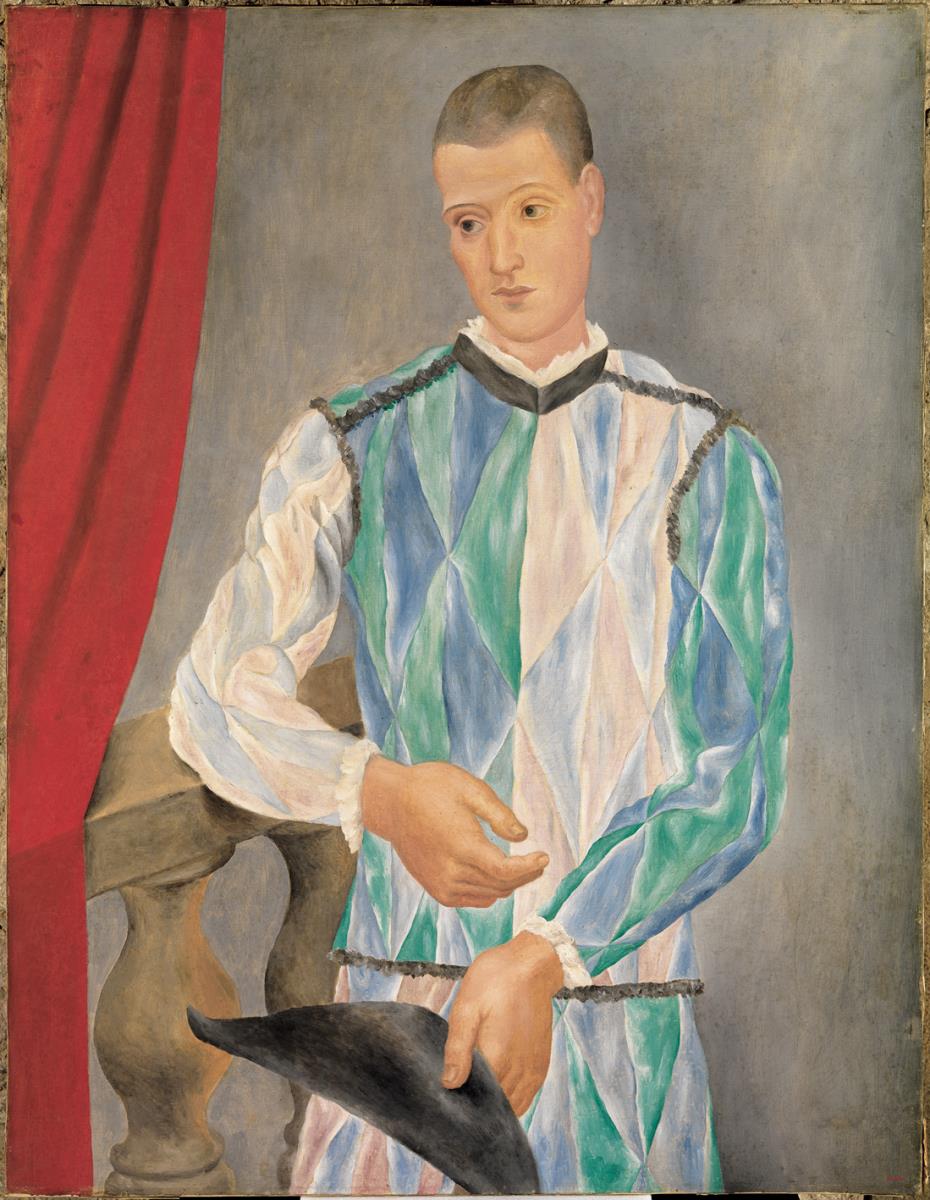Harlequin [Léonide Massine]

Harlequin [Léonide Massine]
Harlequin [Léonide Massine]
Picasso began the year 1917 with the exciting prospect of collaborating for the first time with the world of the performing arts, designing the sets, costumes and grand drape for the ballet “Parade”, by the Ballets Russes company led by Sergei Diaghilev. The commission was offered to him via his friend, poet Jean Cocteau, with whom he travelled to Rome, where the Ballets were on tour, in February of that year to materialise the project. The two and a half month stay in Italy—where he visited Naples and Pompeii—gave Picasso the opportunity to immerse himself in classical Mediterranean culture and, as a result, reinforce the neoclassical (also called “Ingresian”) style with which he shattered the hegemony of cubism in 1914. “Parade” is an exceptional testimony to the artist’s creative journey at that moment, one of intense searching and an ambiguity of artistic languages, during which he delved into the figurative tradition without renouncing his exploration of the paths opened up by cubism. The ballet premiered in Paris in May and was received with great scandal. The company then set out on a tour of Spain that took it to Madrid in June and July, and to the Gran Teatre del Liceu in Barcelona in November. Picasso, who had fallen in love with one of the dancers, Olga Khokhlova (1891–1955), whom he would later marry in 1919, followed the troupe to Spain and stayed in Barcelona from June to November 1917.
This “Harlequin”, of which the Museum preserves a preparatory gouache of the head (MPB 110.231), is one of the various canvases painted during those months in Barcelona. The model is Muscovite Léonide Massine (1896–1979), dancer and choreographer of the Ballets Russes company since Diaghilev hired him to replace Vaslav Nijinsky as principal dancer in 1913. Transfiguring Massine into “Harlequin”, Picasso once again delved into the iconography of this chameleonic character from the commedia dell’arte, who had featured in many of the canvases from the rose period and who reappears here, bicorne in hand, with a melancholic expression uncharacteristic of his usual mischievous disposition and without his typical mask. The character’s monumental and static pose, the chromatic subtlety (the ochres of the skin and the blues, greens and pinks of the characteristic rhomboid-patterned costume) and the emphasis of the lines versus the colours mark the figuration of this painting, which undoubtedly shows the classical style that Picasso began to alternate with cubism from 1914 and that gave such successful results while in Barcelona in 1917. At the same time, the piece foreshadows his compositions with monumental figures of the early 1920s (from the bathers and nudes of Fontainebleau and Dinard to the 1923 series of harlequins, among others), undeniably imbued with echoes of a classical antiquity and with which Picasso was soon to conclude his classicist period.
Most of the works that Picasso produced during those months in Barcelona remained in the family home and some were part of the Barcelona Art Exhibition of 1919, among them this “Harlequin”, which the artist decided to donate that year to the city’s art museum. Thus it became the first work by Picasso to enter a public collection. In 1963, with the creation of the Museu Picasso in Barcelona, the painting became part of its collection, seeing as all the municipally owned pieces by the artist were transferred to the newly created museum.
Located in
CP Sala 09117 cm x 90 cm
Gift of Pablo Picasso, 1919
MPB 10.941

![Harlequin [Léonide Massine]](https://colleccions.eicub.net/api/1/images/https%3A%2F%2Fdobubt4dam3m5.cloudfront.net%2Fpublic%2FHeritageObject%2FH290821%2F142145%2Ffull%2Foriginal%2F0%2Fdefault.jpg)
![Head of a Harlequin [Léonide Massine]](https://colleccions.eicub.net/api/1/images/https%3A%2F%2Fdobubt4dam3m5.cloudfront.net%2Fpublic%2FHeritageObject%2FH290803%2F172940%2Ffull%2Foriginal%2F0%2Fdefault.jpg)






